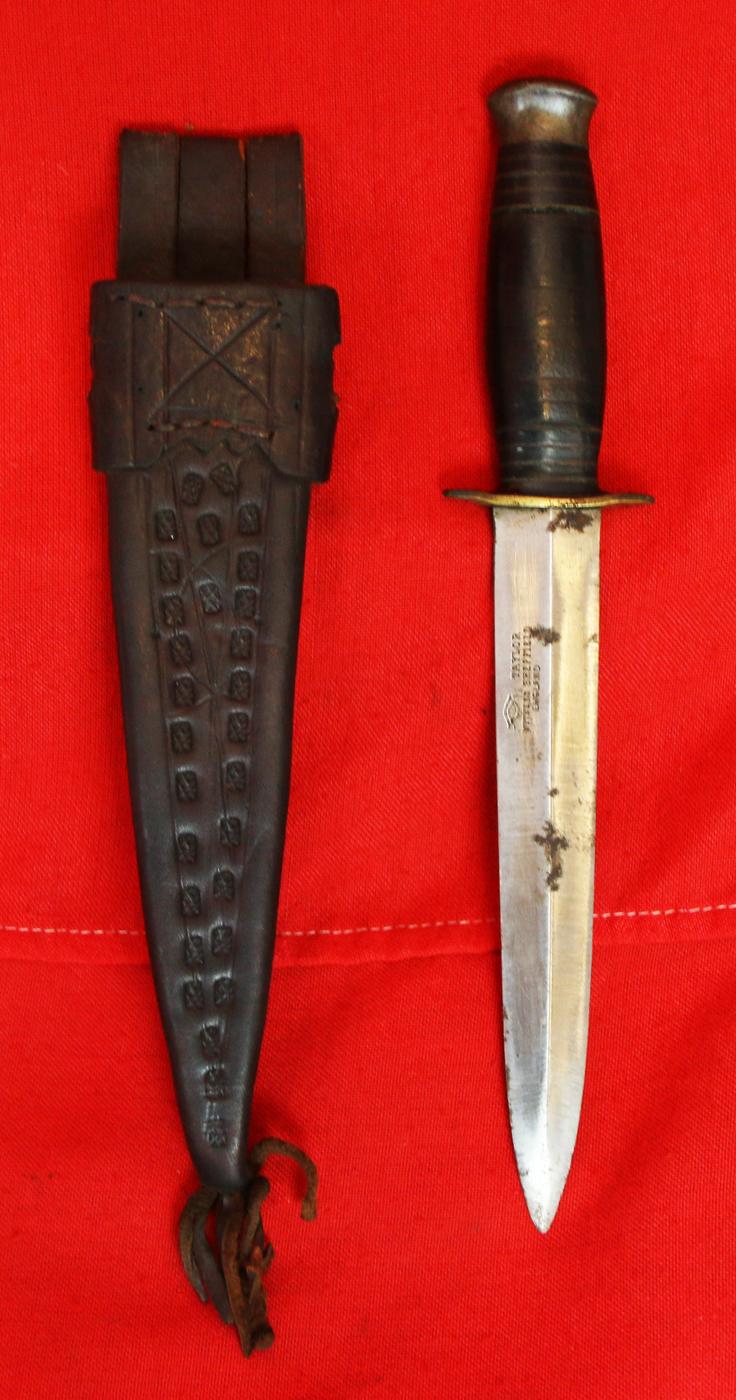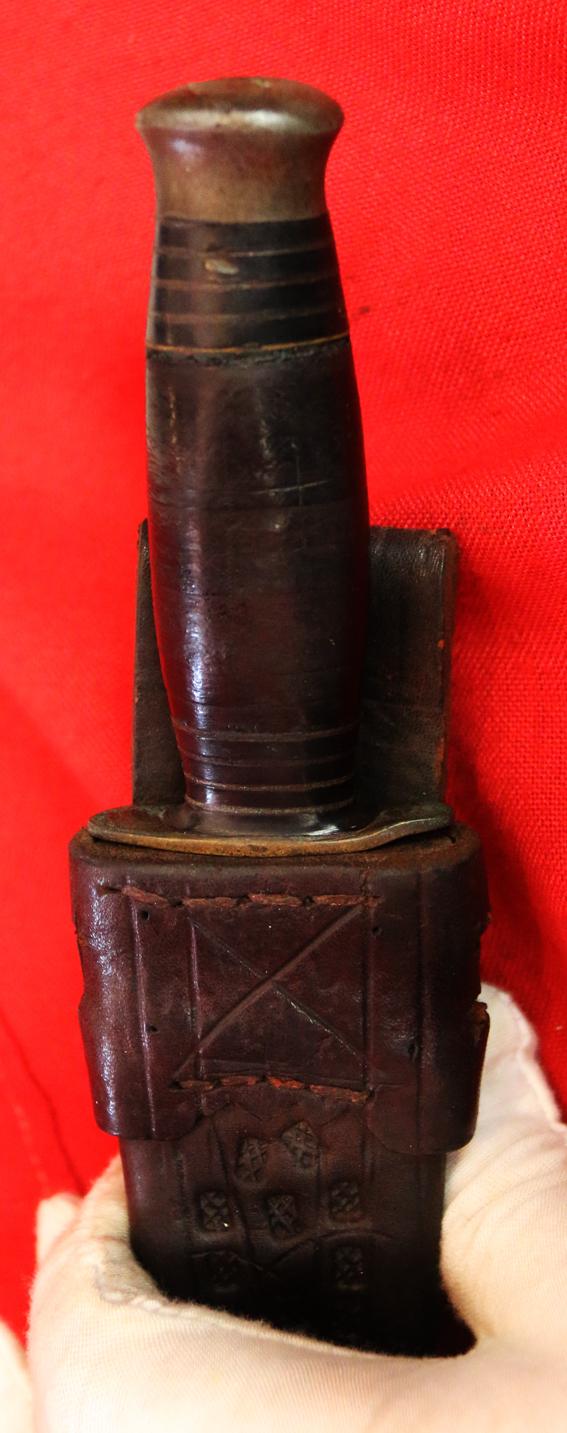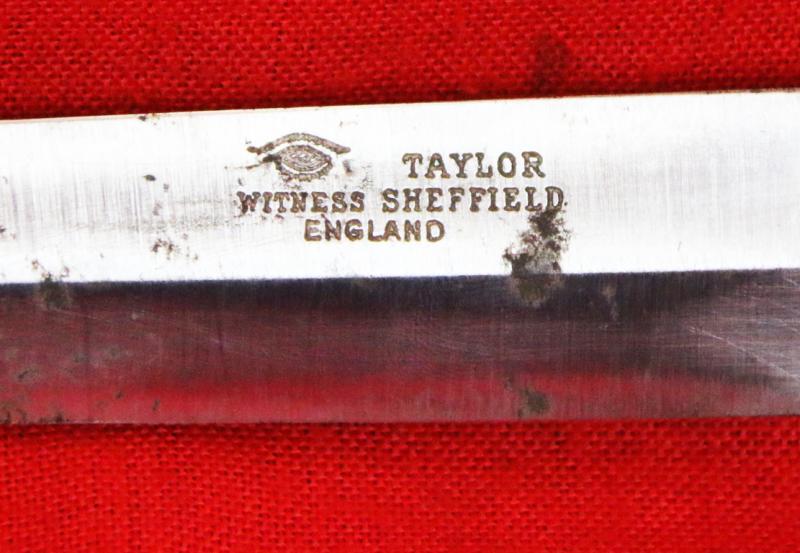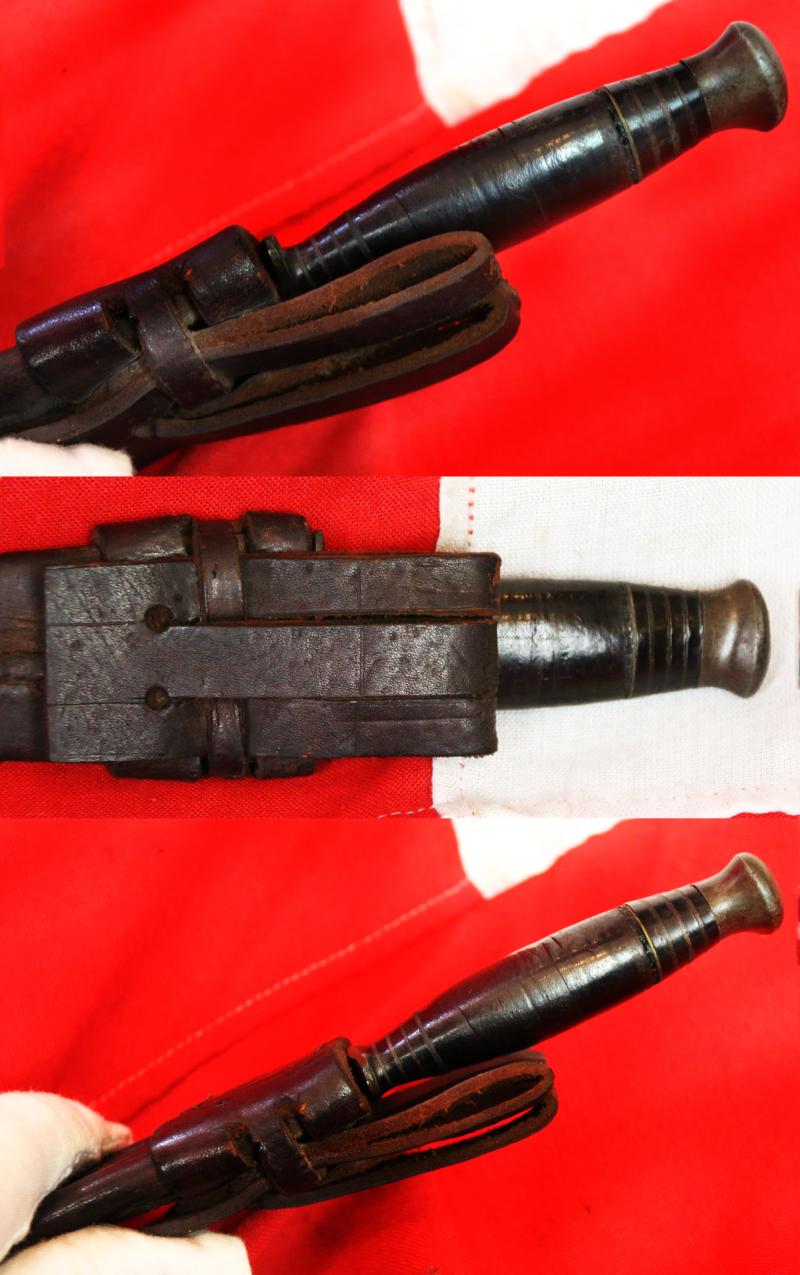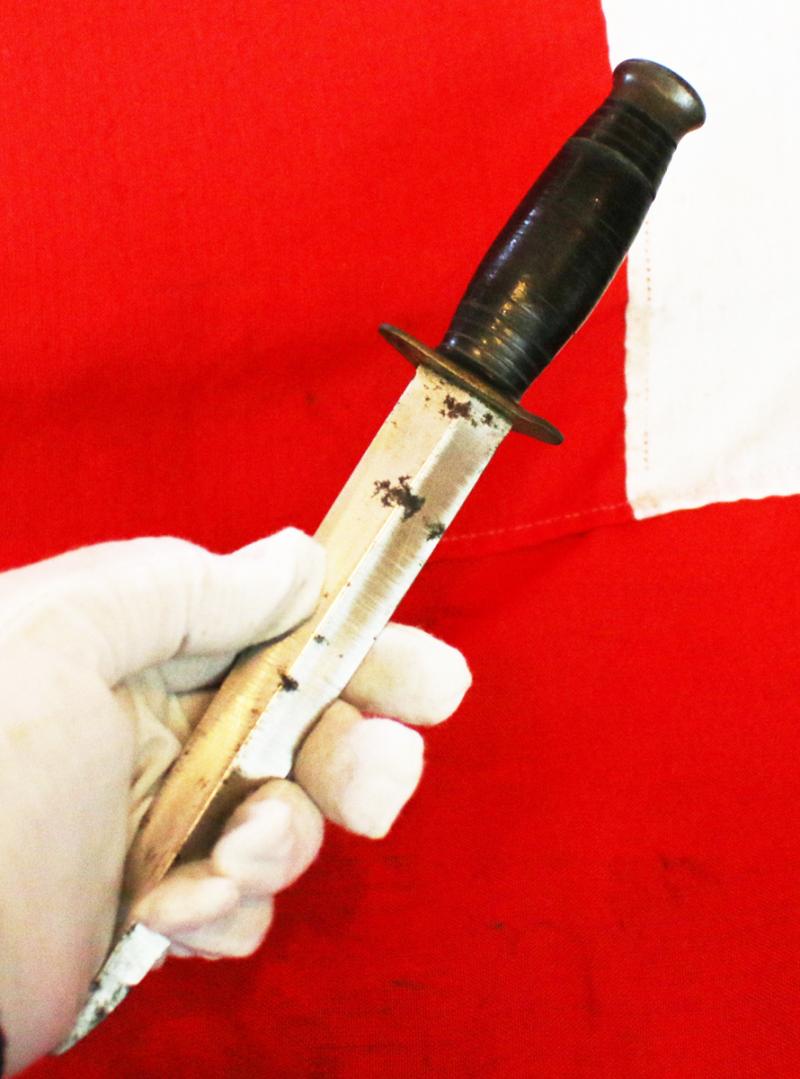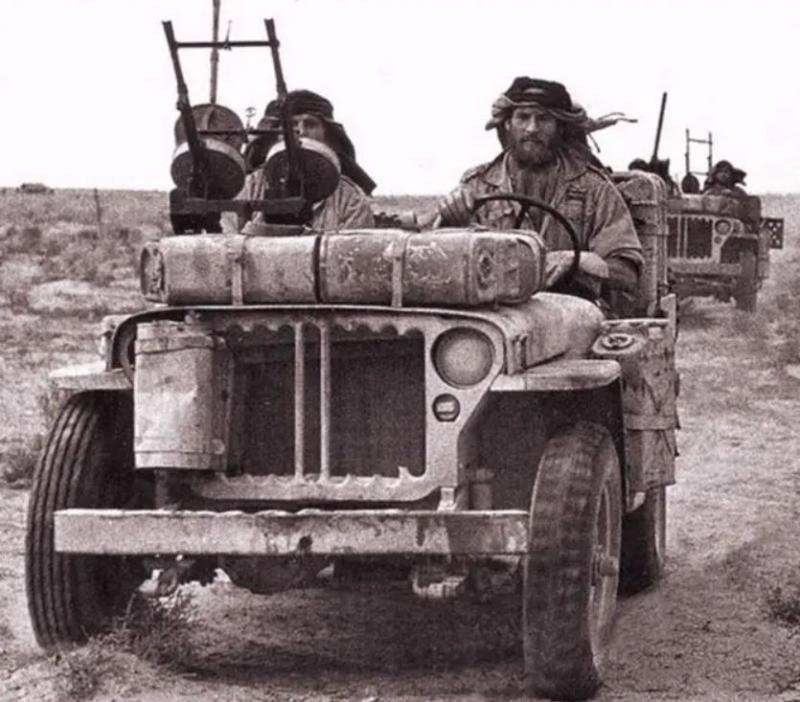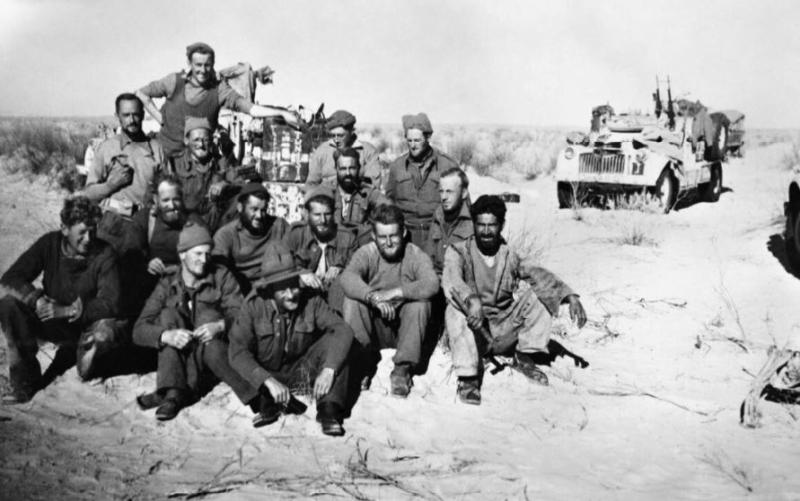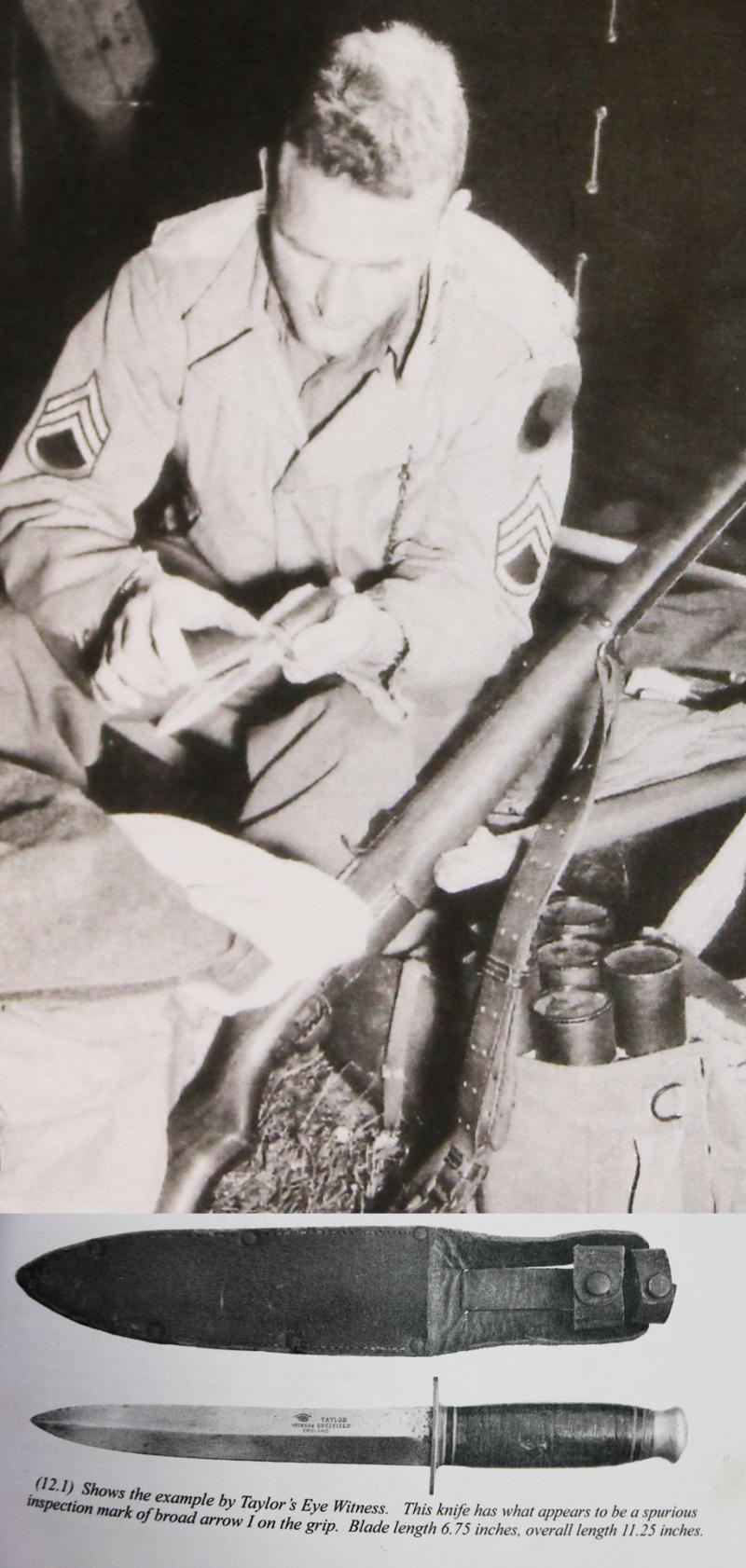Private Purchase WW2, 1941, "Taylor's Eye Witness" Desert Rat Commando Knife 'Afrika Korps Campaign' Against Rommel At Tobruk. With North African Scabbard With WW2 Hand Made British Service Belt & Strap Loop
Around 25 years ago we bought another identical Taylors Eye Witness fighting knife from a Desert Rat No 8 {Guards} Commando veteran that also had the very same form of North African made scabbard with the same military service belt and strap loop. The blade still has its original cross-grain polish, and is near razor sharp. There are a few rust stains which we have left untouched. Overall it has remained unmolested since the war.
During World War II, the "Taylor's Eye Witness" Sheffield-made stiletto double edged bladed fighting knife, a private purchase item, gained popularity among British commandos and US troops stationed in Britain, particularly prior to D-Day.
The Twin Pimples was a feature in the Axis lines surrounding Tobruk. It was a defensive strong point consisting of two hills very close together that dominated the opposing Allied lines and at the time of the raid was held by units of the Italian Army. The 18th King Edward's Own Cavalry, normally part of the 3rd Indian Motor Brigade, held the line across from the Twin Pimples when it was decided to take out the Italian position. The No. 8 Commando was selected to carry out the operation and for some days prior they conducted patrols with the Indians to get to know the lay of the land.
The plan called for three officers and 40 men of No. 8 Commando and a small number of Australian Engineers (to deal with ammunition dumps and gun emplacements) to cross the Italian forward positions to the road that they used to bring up supplies and then follow the road to the rear of the Twin Pimples and engage the position from behind. The 18th Cavalry were to carry out a diversionary raid just before the commando assault to divert the defenders' attention. The man chosen to lead the raid was Captain M. Keely, the second in command was Captain Dunne and the third officer was Lieutenant Lewes On the night of the raid, 17/18 July, half the Commandos were armed with Thompson submachine guns and the other half with Lee–Enfield rifles with bayonets fixed. All carried hand grenades and every third man wore a groundsheet slung bandoleer fashion to use as a stretcher.
The Commandos left their own lines at 23:00 hours on 17 July and crossed the Italian forward positions and main lines undetected. Upon reaching the supply road they had to take cover and wait, as the attack was planned for 01:00 hours on 18 July. They moved closer to their objective just prior to the start of the diversionary attack by the 18th Cavalry. The diversion was a success, and Italian machine-gun fire and very lights were directed towards the Indian cavalrymen. The Commandos managed to get within 30 yards (27 m) on the Twin Pimples before being challenged. The challenge was answered by a frontal attack by the Commandos. So as not to confuse their own forces with the Italians in the darkness, the password Jock was used when a position had been taken. The fire fight lasted about four minutes and the Australian Engineers planted explosives on several mortars and an ammunition dump. The planners had estimated that the Commandos could spend no longer than 15 minutes on the Italian position before it was engaged by the Italian artillery. The raiders had only got about 100 yards (91 m) from the Twin Pimples when the Italian artillery started to come down onto their own position.
Aftermath
The cost of the raid to the Commandos was five wounded, one of whom later died of his wounds. The No. 8 Commando, together with the rest of Layforce, was disbanded soon after. The operational difficulties that had been exposed, combined with the inability of the high command to fully embrace the commando concept, had largely served to make them ineffective. Two members of No. 8 Commando, David Stirling and Jock Lewes, would form the Special Air Service by the end of July 1941. Tobruk would remain under siege until relieved by Operation Crusader in November 1941.
The only soldier to be killed on this raid was Corporal John “Jackie” Edward Trestrail Maynard of the Duke of Cornwall's light Infantry and No 8 (Guards) Commando
These knives were often purchased from private/commercial suppliers and were favoured by British and US troops.
The knives featured a double-edged blade, a grip made of pressed leather washers, and a brass pommel. The original leather scabbard was often missing its small retaining strap, so local made replacement were often made and used
More and more photographic evidence has emerged showing these knives being used by British/Commonwealth and US troops, making them more sought after.
Due to the increasing evidence and the rising value of Fairbairn-Sykes knives, this pattern of fighting knife has become difficult to source.
The story starts in 1820 when John Taylor founded a small pocketknife & edge tools workshop in the very heart of Sheffield, the ancestral home of cutlery in Great Britain. As was normal back then, makers would seek the use of a symbol by which their products would be recognised, even by those unable to read. In 1838 Taylor was granted the "Eye Witness" trademark for his goods, accompanied by an illustration of an all-seeing eye, hence the Eye Witness name.
The last photo in the gallery is of a US sergeant sharpening his eye witness fighting knife in his tent before his departure for D-Day, with another picture of an eye witness fighting knife, in its regular scabbard, that appears in Ron Flook's book {12.1}
See 'The Fairbairn Sykes Fighting Knife And Other Commando Knives' By Ron Flook , page 179 {12.1}
Code: 25689
650.00 GBP


